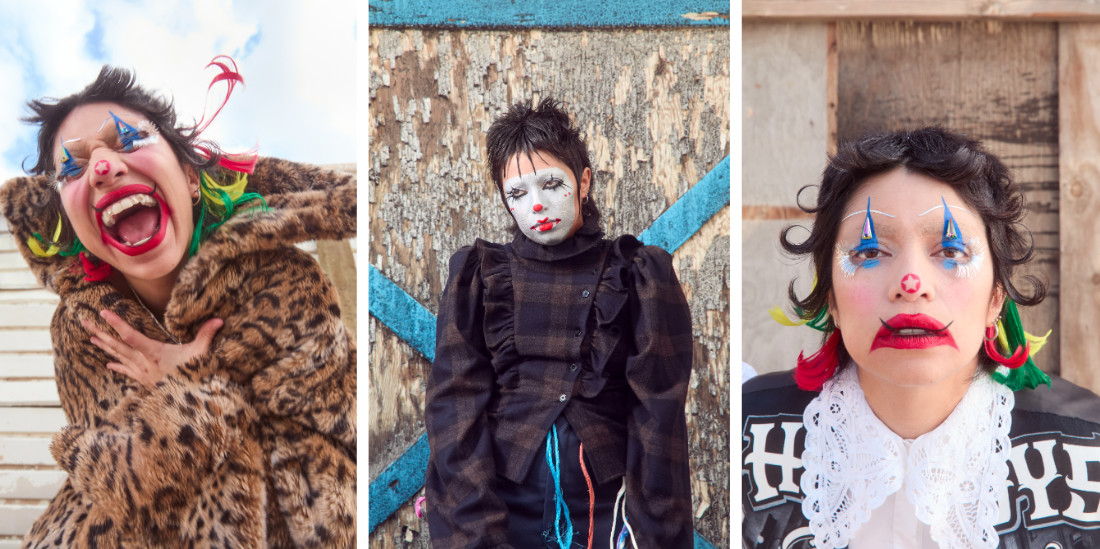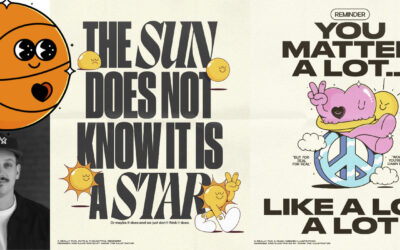This Pride month, we’re celebrating LGBTQ+ artists across the creative spectrum. We highlighted some LGBTQ+ comics creators previously, and learned more about the work of Translatin@ Coalition‘s graphic designer Kevin Cortez. Today, we’re looking deeper into the art of photographer and installation artist Yulissa Mendoza.
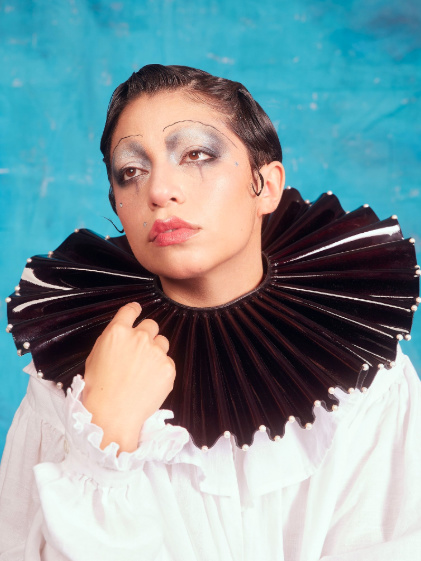
Yulissa Mendoza is a fashion photographer and multi-media installation artist based in Southern California. The foundation of their work stems from their desire to facilitate safe spaces in order for people to be able to express themselves fully and explore themselves further.
They use this as their building block in order to amplify voices, empower marginalized communities, and carve space for those often overlooked. They aim to rebuke rigid, old gender roles while honoring cultures and pushing the boundaries of fashion and culture.
Mendoza has been using Wacom tablets for years for their photo retouching. So, when we released the new Wacom Intuos Pro pen tablet line, we wanted to see what they thought! We also interviewed Mendoza to learn more about their background, their work, and how they’re getting by in tough times. Note: The interview below has been edited slightly for clarity and length.
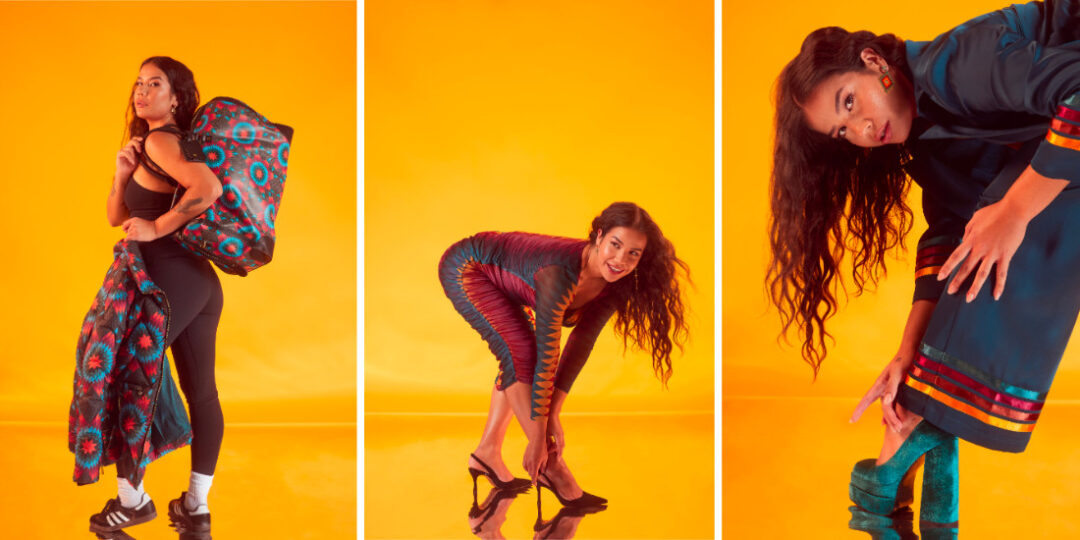
How did you come to pursue art as a career? Were you a creative kid?
I have always been creative. I was the kid that would draw on my homework, my arms, and school desks. Alongside that, I would fill up rolls of film on family cameras and then eventually the memory sticks of digicams. In high school I was doing mandala art, in college I began to draw florals as an ethnographic practice, and then I began to take portraits of folks. It wasn’t until the last few years where I feel like I have finally found mediums and styles that suit my inner voice and allow me to explore myself and the world further.
Did you go to college? Do you recommend it to young creatives who are trying to determine their paths? How about art school vs. a more traditional educational focus?
Honestly, I used to tell people that college was a waste of my time, but deep down it’s because I didn’t go out of my way or take the time to soak in and take part of all that my school had to offer. I simply didn’t know what I didn’t know. As I’ve gotten older, I’ve come to realize that I move the way I do because of my college experience. Those qualities are some of the things I admire most about myself, so now my answer is the complete opposite.
I went to school for cultural anthropology, so I never took any formal art courses. I am a self-taught, but community made artist. What I mean by that is I’ve learned a lot of my skills by being a sponge and listening to what strangers and friends have to say, or even by offering a hand. I’ve learned and grown so much as an artist through others’ teachings, conversations, and everyday life. Art and its lessons can come from an institution, a video on a screen, or someone’s bedroom, and it’s important to not limit one’s thoughts on where knowledge can come from or by who can be teaching it.

You work as a photographer, but also build immersive exhibitions like Regalo among other creative pursuits. How do you balance having a variety of artistic interests with the need to “make a living?” Do you have any advice for early-stage creatives who are trying to find a balance between self-expression and financial sustainability?
My pursuits have only come because of others and the relationships that I have cultivated. On the record, my solo show REGALO was a year’s worth of work, but off the record REGALO was five years’ worth of building relationships, shadowing, and collaborating with others. Time is valuable, and so are exchanges.
Financially speaking: I have worked odd jobs, part time, and seasonally, just to invest in heavy periods of art making, alongside maintaining a steady rhythm of art making in the meantime. Finances, time, responsibility, and lifestyles aren’t going to be the same for everyone, but if there is one thing I learned from being a runner it’s that slow and steady wins the race and you have to keep putting one foot in front of the other.
How has Wacom factored into your creative journey? Why do you continue to use Wacom products for your work?
Wacom is my #1 tool when it comes to retouching. Since the day I first used one, I have not been able to edit a photo without it. It’s a reliable tool that cuts my editing time down significantly and allows me to pinpoint areas that need work. Some of my favorite consistent features over the years have been the pressure sensitivity on the pens, the ability to travel with a tablet because they are lightweight, and the customizable buttons. It’s truly my main talking point whenever I see an artist of any sort working with a mouse.
Some repeated themes in your work are clowning and costuming, and I personally see a lot of connections to drag and gender nonconformity. Why are you drawn to these forms of expression? How do they reflect your own interests and background?
I have this photo series called “Portraits of Clown” that I’ve been working on since 2023. It’s a self-portrait series where I explore my own identity via the concept of clowning. My relation to clowns has evolved in so many ways, but where I really started falling for them was sometime in college when I came across the french clown Pierrot who is this devastatingly sad clown. I fell in love with the big puff sleeves, the drama in the clothing, and the theatrics of it all.
I really identify with clowns and their foolery because they can be genderless, drag-esque, and they are very surreal in their nature. They’re a persona who isn’t afraid to take up space and be unapologetically themselves amongst a crowd and is a person who can be so silly that people won’t even look their way. Kind of like how people describe the streets of New York.
I’m naturally a very shy and introverted person, so they are who I hope to show up as in my everyday life. Because of this, I do my best to incorporate clown silhouettes into my everyday wear so I can play pretend and imagine that the world is my stage, and conquer my everyday fears and move through everyday life as such.
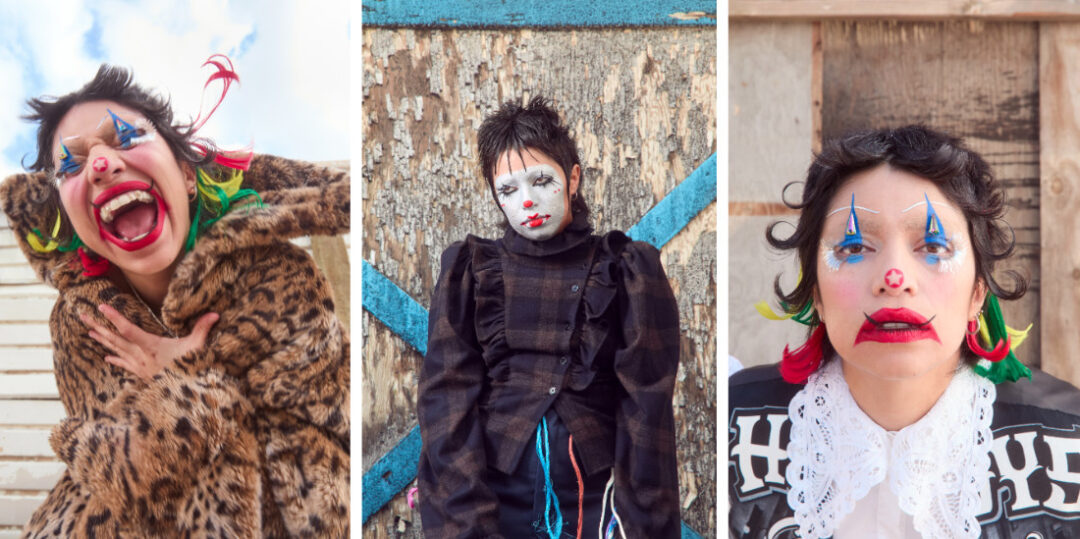
Another recurring theme is your cultural heritage. Why is it important to you to reflect your cultural, religious, and geographical origins in your work?
For me and my work, culture and origin is a bit more intimate because I mainly draw inspiration from my own family and my upbringing. For context, I grew up in a very traditional Mexican household where there wasn’t much intimate communication. Over the past few years I’ve been really having to sit with the idea of and the reality that my family is getting older, they’re passing away, they’re losing their memories, and I still don’t know much about them. Art has become a way of me getting to know them and their stories better.
I draw a lot of inspiration from my family, and so my art has slowly become more archival and preservation based. To add another layer to this, I grew up in Muscoy, which is the unincorporated area of San Bernardino, CA. Culturally it’s seen as a sliver of Mexico. People have acres of land where they grow their own food and have livestock, they sell food from their homes, and the horses and cars share the roadways to this day – it’s very much rancho vibes.
It’s a location that is on the brink of massive change due to the logistics industry. Some of the empty lots that were previously homes have already been turned into parking lots for all of the warehouse trailers, and really the only thing separating Muscoy from the warehouses at the moment are the wash, a railroad, and a freeway.
My grandma always says: “No quiero que la gente me traiga flores a mi funeral – no las voy a disfrutar – tráemelas mientras estoy viva.” That means “I don’t want people to bring flowers to my funeral – I won’t get to enjoy them – bring them to me now.” I want to showcase this vibrant community and preserve my culture now. Archiving and flower bringing doesn’t have to be an act of after – it can be an act of now.
You’ve said that you intend for your work to empower people from marginalized communities. How do you hope your work will be received by LGBTQ+ and immigrant communities, especially given recent political shifts in the United States? Has the current state of things shifted how you think about your work?
The one thing I love about being an artist is that I am the one who gets to define how I move, how I make, and what that looks like. Historically, my art and its presentation has always been a chameleon of sorts, in the way that it is made, perceived, and is shared during times of civil unrest. I sift through my toolkit of acquired skills to exercise ways to help others while engaging in new forms of learning to be of help to others.
With the current kidnappings of undocumented folks, I have turned to printmaking. During times of civil unrest in Mexico, it has played a significant role in shaping the civil landscape and continues to prevail in places like Oaxaca, where there is a large community of printmaking collectives. There is power in making information accessible to the community, creating physical documentation, and expressing oneself.

How are you taking care of yourself in times like these, and do you have any thoughts about how other artists from marginalized communities might be able to do the same?
For me there hasn’t been much rest, but I am OK with more of my energy being needed at this moment. It’s about knowing when to shift energies, skill sets, and how one can show up. What makes it easier is doing it alongside others. The steps forward don’t seem as tiring when I know that there are folks out there and alongside me actively doing their best in their own personal ways.
My advice to anyone, even those outside a marginalized community, is to not underestimate the impact your ever-shifting role can have in the lives of others, because we all know a neighbor, a friend, or a family being affected. No role or action is too small. The more of us who stand together, the easier the weight becomes to carry.
Do you have any projects coming up on the horizon that we should keep an eye out for?
Yes! I can’t spill too much yet, but I will be having artwork on display in Santa Monica and Santa Ana in September, 2025. They have been in the works for a while now – I’m excited for the outfits and for the day that I can finally share them with the world.

Informazioni sull'artista
Yulissa Mendoza is a fashion photographer and multi-media installation artist based in Southern California. The foundation of their work stems from their desire to facilitate safe spaces in order for people to be able to express themselves fully and explore themselves further. They use this as their building block in order to amplify voices, empower marginalized communities, and carve space for those often overlooked. They aim to rebuke rigid, old gender roles while honoring cultures and pushing the boundaries of fashion and culture.
Check out their work on Instagram, Tik Tok, or their website.

